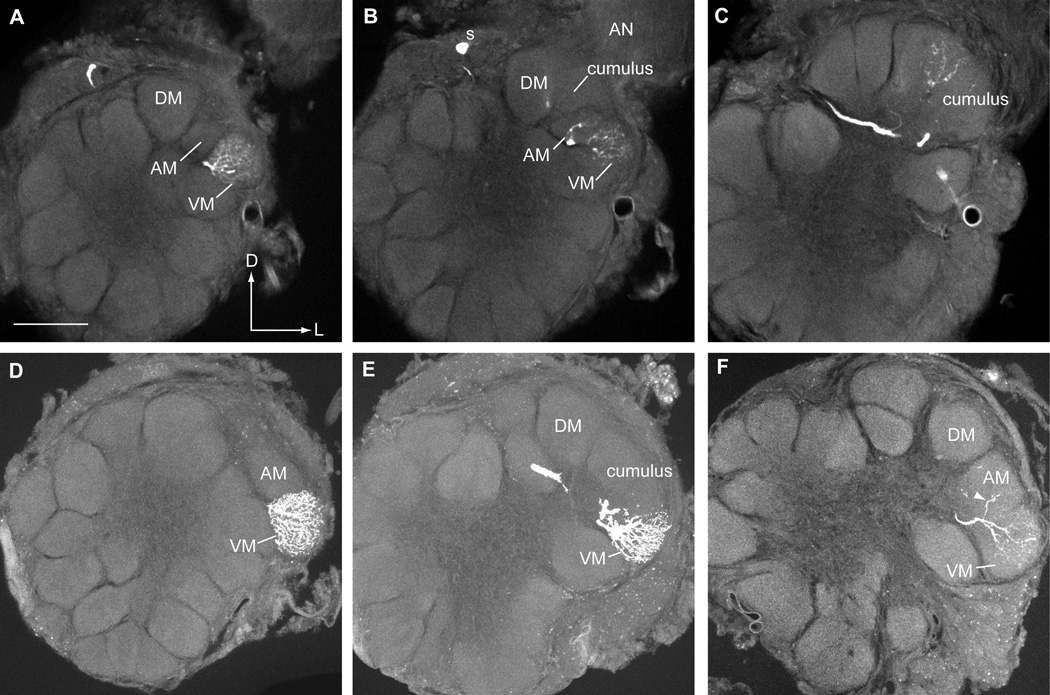Figure 6.
Several olfactory PNs exhibited a normal physiological response profile but had dendritic arbors in an unexpected glomerular location or arborized within two or more glomeruli in V-Z transplant males. A–C. A series of confocal images at different depths through the antennal lobe revealed a single PN with a medial cell body (s) and dendritic arbors in VM, AM and the cumulus. The MGC clearly resembled that of the antennal imaginal disc donor, H. virescens. The most apparent arbor was in VM with weaker arbors in AM and the cumulus. This PN responded to Z11-16:Ald and Z9-14:Ald (Fig. 3B, cell #3). D–E. Confocal images from two consecutive histological sections revealed a PN with a uniglomerular arbor restricted to the VM glomerulus. The anatomy of the antennal lobe indicated that a donor MGC (H. virescens) had formed. This PN had a medial cell body (not visible in these images) and responded to stimulation with Z11-16:OAc (Fig. 4B, cell #1). Such PNs have been encountered in normal H. virescens males but arborized only in AM (Vickers et al., 1998). F. Another medial cell body PN sensitive to Z11-16:OAc (Fig. 4B, cell #2) was shown to have an unusual multiglomerular dendritic arbor. This PN arborized strongly in VM and had a weaker secondary arbor in AM (indicated by arrowhead). Again the arrangement of MGC glomeruli most closely matched that of the antennal disc donor, H. virescens. Scale bar = 50µm, same for all images. D, dorsal; L, lateral.

